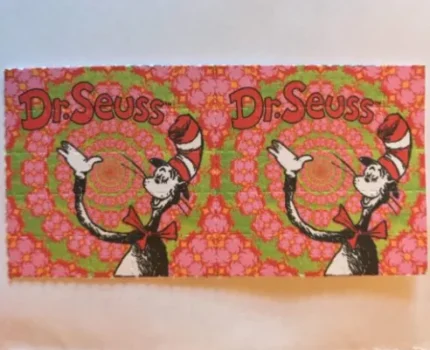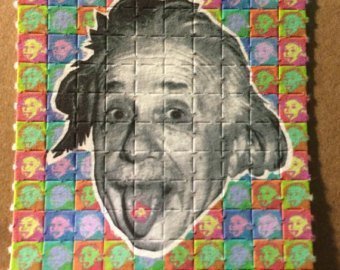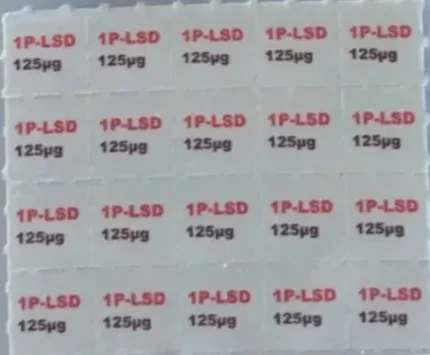How is LSD used?
LSD is usually taken by ingesting small tabs of paper (frequently placed under the tongue) which have been soaked in the liquid form of the drug then dried. In rare cases it is taken in a liquid, gelatin, or tablet form. Sometimes a dose is soaked into a sugarcube. Doses range from 20 to 100 micrograms now, though in the 1960s they ranged from 100 to 200 micrograms. Because LSD is produced illegally, it is difficult to know how strong a dose is. The effects of the drug begin in about 30 minutes and last up to 12 hours. It can be very difficult to sleep if LSD has been taken in the last 6 hours.
Buy Lysergic Acid Diethylamide Online
Why do people take LSD?-Buy Lysergic Acid Diethylamide Online
LSD, like other hallucinogens, produces a distortion in the user’s sense of reality, including images, sounds, and sensations that do not really exist. These hallucinations can be pleasurable and for some people even intellectually stimulating, but they can also be disorienting or disturbing and result in a negative emotional experience (bad trip). It is difficult to determine what kind of an experience a person will have on LSD because the same person can have very different experiences each time. As with all drugs, but especially with LSD, a user’s experience is shaped by her previous drug experience, expectations, setting, as well as the neurological effects of the drug.
What are the short-term risks of taking LSD?-Buy Lysergic Acid Diethylamide Online
The most common dangers of LSD result from bad trips, including terrifying thoughts and feelings, despair, fear of losing control, and fear of death. These problems are especially common and severe in people with underlying mental problems like severe depression, schizophrenia, or bipolar disease. Some fatal accidents have also occurred among users who could not perceive the reality of their situation. They hallucinate safe situations when they are actually in danger or are unable to judge distances. You should never operate machinery or drive cars while taking LSD.
Problems that might occur include:
- Extreme changes in behavior and mood; person may sit or recline in a trance-like state
- Chills, irregular breathing, sweating, trembling hands
- Changes in sense of light, hearing, touch, smell, and time
- Nausea, especially in the first two hours
- Increase in blood pressure, heart rate and blood sugar
- Fatigue the next day
Are there long-term consequences to taking LSD?
Hallucinogens can cause extreme, long-lasting adverse neuropsychiatric effects, like flashbacks (post-hallucination perceptual disorders), relatively long-lasting psychoses, severe depression or shizophrenia-like syndromes, especially in heavy or long-term users or in people with an underlying mental illness.
Some of the long-term problems associated with chronic or heavy LSD use are:
- A person can experience rapidly changing feelings, immediately and long after use.
- Chronic use may cause persistent problems, depression, violent behavior, anxiety or a distorted perception of time.
- Large doses may cause convulsions, coma, heart/lung failure or ruptured blood vessels in the brain.
- “Flashbacks” may occur long after use.
Is there any way to reduce the risk of having a bad trip?
LSD experiences are heavily influenced by environment.
Here are some ways to reduce the risk having a bad trip:
- Make sure you take it with someone you know and trust, preferably someone who knows how strong the effects of a hallucinogen can be.
- Make sure you are somewhere where you feel safe, secure and comfortable.
- Avoid taking LSD if you are upset, feeling low or insecure–this could lead to a bad trip.
- Avoid taking more. The effects come on stronger after a while, and you could end up having a much stronger trip than you can handle.
If you’re having a bad time, avoid flashing lights and visuals and get a friend to take you to a safe, calm space.
How do I help a friend who’s having a bad trip?
It is important to make your friend feel safe and comfortable, usually away from other people, visual stimulation, or noises. Speak in a soothing voice to them and reassure them that their bad emotions, sensations, and visions are just the effects of the drug and will wear off in time. If your friend is inconsolable or seems violently agitated, then seek medical help right away. Call EMS at
Is LSD addictive?-LSD (Lysergic Acid Diethylamide)
LSD does not produce compulsive drug-seeking behavior. Addiction to hallucinogens is rare, although poly-drug addicts (people who are addicted to several drugs) frequently abuse hallucinogens as well. Because LSD users develop extreme tolerance to LSD rapidly, the drug cannot be abused for more than a few consecutive days, preventing the kind of physical and psychological dependence associated with other drugs. This tolerance usually goes away after a week or so of abstinence from the drug.
LSD (LYSERGIC ACID DIETHYLAMIDE)
| Synonyms | The most common synonyms are:
|
| Classification | Hallucinogen:
|
| Visual description | White, odourless and bitter crystalline powder. It is available in a variety of forms:
|
| Mechanism of action |
|
| Routes of administration |
|
Effects sought out by the user
- Euphoria and feeling of dissociation
- Feeling of joyfulness
- Pseudohallucinations: it does not cause hallucinations per se but creates illusions by altering the senses (all five senses)
- Synesthesia (crossing of 2 or more senses) and spiritual journeys
Common toxic effects-LSD (Lysergic Acid Diethylamide)
- Aggression
- Impaired judgement
- Deep anguish
- Concentration problems
- Reduced coordination
- Reduced appetite
- Numbness
- Dizziness
- Weakness
- Chills
- Hypertension
- Mydriasis (dilation of the pupils)
- Nausea
- Panic
- Paranoia
- Unpleasant and terrifying feelings (bad trip)
- Tachycardia (rapid heart rate)
- Tremor
Overdose effects-LSD (Lysergic Acid Diethylamide)
- Abnormal increase in body temperature
- Arrhythmias
- Coma
- Convulsions
- Hypertensive crisis
- Psychotic break
Effects associated with chronic use
- Delirium
- Depression
- Hallucinogen Persisting Perception Disorder: users experience a spontaneous and unpredictable recurrence of pseudohallucinations experienced while on LSD
- Loss of motivation
- Psychosis
Tolerance (need to increase the dose to feel the same effect)
Develops quickly, especially if taken over several consecutive days.
Addiction
Psychological dependence is possible.
Withdrawal
No
Onset and duration of action
| Route of administration |
Onset of action |
Peak | Duration of action |
| Sublingual | 30 to 40 minutes | 2 to 4 hours | 10 to 12 hours |
Intoxication management
- No antidote available.
- Treatment is mainly symptomatic.
Many different street drugs are sold under the same name. Furthermore, nothing guarantees the quantity, purity or even the content of a street drug in spite of the fact that it may, in some cases, look like medication.
If you need help or want to learn more:
Partnership for a Drug-Free Canada













Reviews
There are no reviews yet.